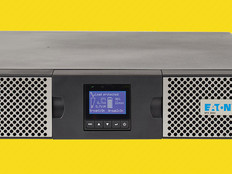Making Research Materials Available Quickly
At NASA's Scientific and Technical Information (STI) program, scanning research and development documents is the most efficient tool for providing desktop access to the world's aerospace community.
Technical aerospace information, presentations, journal papers and other documents are scanned and saved in searchable PDF formats. Between 6,000 and 10,000 documents are scanned each year at 10 NASA centers around the country and sent to the NASA Center for Aerospace Information.
The center processes, archives and disseminates the scientific and technical information. Records are indexed and digitized daily.
"From the beginning, NASA has attempted to consolidate and distribute information in the broadest practical way," says George Roncaglia, STI program manager. "The most practical method is to scan and digitize. You can have scanned documents in many locations and distribute them to a bigger audience for far less money."
Scanning reduces duplication in research, increases productivity and aids scientific progress at NASA, Roncaglia says. The Center for Aerospace Information maintains more than 4 million bibliographic records.
Roncaglia says the scanning provides "tremendous advances" in searching PDF files and preserving historic documents, some which include scientific information that is still relied on today in the aerospace industry. "The digital process has taken priority" over hard copy, he says.







